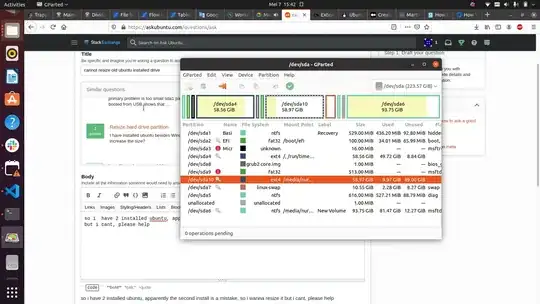So I dual boot installed Ubuntu even though it is not dual boot (I cannot choose), apparently the second install is a mistake, so I wanna resize it but I can't, please help I did not know what to do
- So how do I delete it in live Ubuntu?
- Does deleting the grub_bios partition risky?
- Do I have to clone Ubuntu then delete these 2 drives
- Do I have to get fresh installation which is a lot to prepare for my programming needs,
- Do I have another suggestion, please? Thank you
This is my drive from GParted software

/boot/grubdirectory so I'm not sure what you mean by "grub_bios" partition, MBR refers to the first 512 bytes of the disk which is outside of partition(s) being device specific (ie. relates tosdawhich is the device,where assda1for example is a partition). You don't need to re-install or clone, but I could be missing something as your post is a little unclear (to me anyway) – guiverc May 07 '21 at 09:43so i boot live ubuntu, then install gparted, and then delete sda7,sda8,and sda9 and sda10? then i merged it to sda 4? sorry i have to admid it, im kinda dumb, i hope u can help me here
– Nurjamil May 07 '21 at 09:49